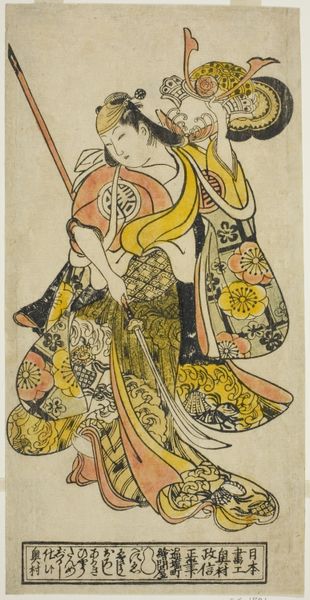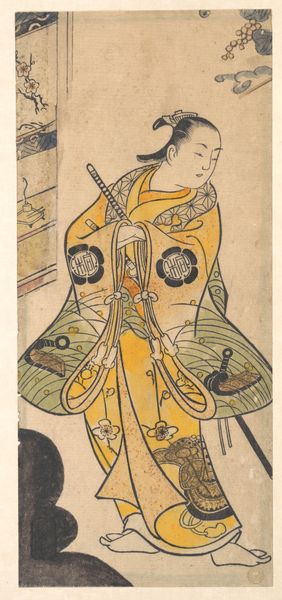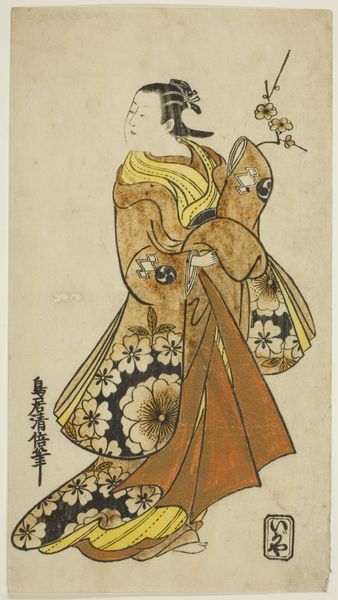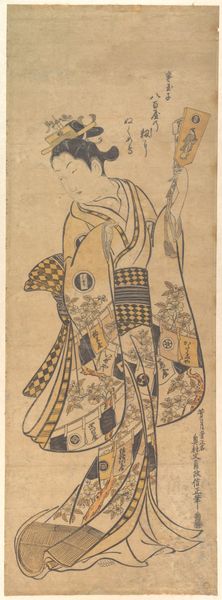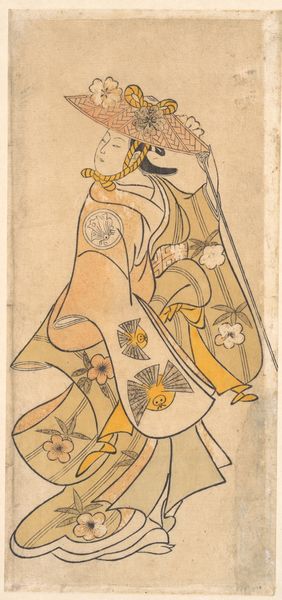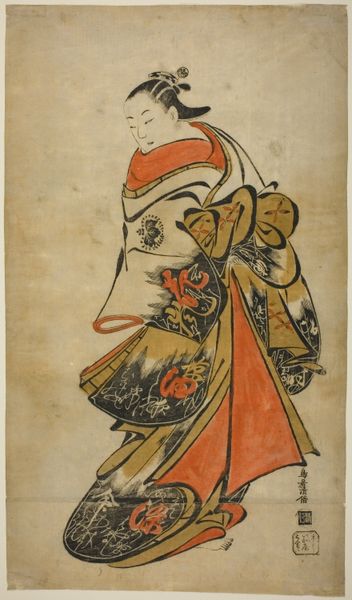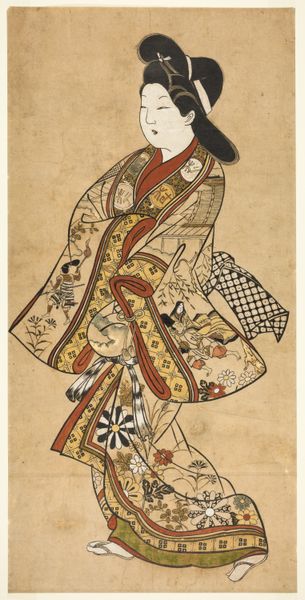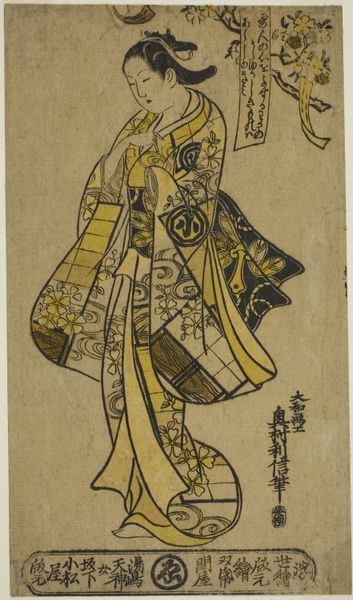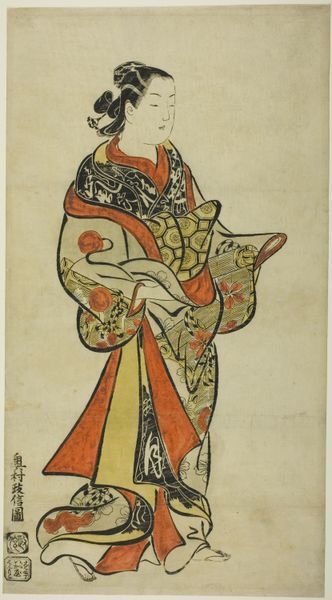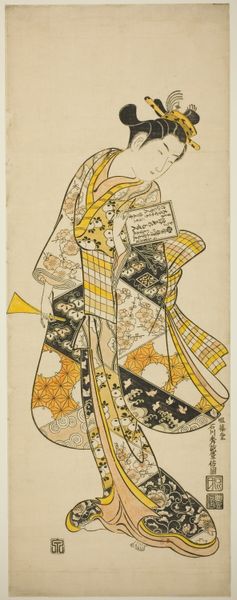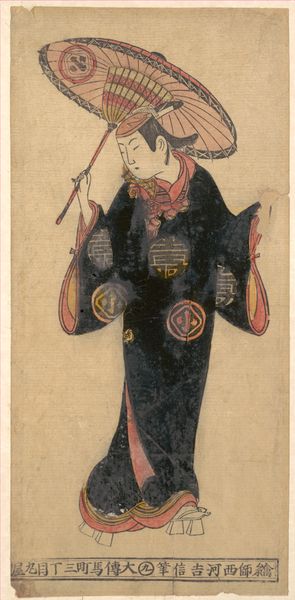
print, woodblock-print
#
portrait
# print
#
asian-art
#
ukiyo-e
#
figuration
#
woodblock-print
Dimensions: 29.2 × 14.2 cm (11 1/2 × 5 9/16 in.)
Copyright: Public Domain
Curator: Here we have a woodblock print titled "The Actor Ichikawa Monnosuke I," created around 1719 by Okumura Toshinobu, and currently residing at the Art Institute of Chicago. Editor: My first impression is one of poised elegance. There's a striking verticality to the composition, enhanced by the figure's confident stance, but I wonder why his facial expression is almost blank. Curator: That stoicism is key to understanding the print's function. This is ukiyo-e, 'pictures of the floating world,' and actor prints like this were hugely popular. Ichikawa Monnosuke was a celebrity, and these prints served as both advertisement and memorabilia. His impassive face is a stylized mask, suggesting the character rather than the man. Editor: It’s fascinating how the flowing lines and intricate patterns on his robes still convey such a strong sense of presence, despite the lack of conventional emotional expression. I'm drawn to the details. What can you tell me about the symbolism embedded here? Curator: Note the two swords tucked behind the figure; those were worn with Kabuki performance attire and designated the gender. The symbol emblazoned on his sleeve denotes his family lineage. But it’s the small horse rearing at the hem of his kimono that catches my eye. It symbolizes the speed, power, and agility sought for performers. Horses appear elsewhere in East Asian symbolism. Editor: And there’s something slightly unsettling about the gesture of the hands. Curator: Precisely. His placement of the hands—veiled and almost skeletal—alludes to his control of both sword and role. They remind viewers of mortality—that life, like the stage, is but a fleeting illusion. Editor: So, beyond capturing a likeness, the print functions as a complex visual code for status, skill, and philosophical musings about human existence. The layers of meaning encoded in this image, from the floral kimono designs to the figure’s hands, weave together social, personal, and symbolic narratives that speak powerfully across time. Curator: Absolutely. Looking at the piece through our contemporary eyes we perceive it, yes, through art history, but we must also consider the role of theater and celebrity and image making. Toshinobu was giving us much more than an advertisement. Editor: Indeed, it’s a testament to the enduring power of art to simultaneously reflect and shape our cultural values and assumptions, something an artwork, whether of East or West, has in common with humanity.
Comments
No comments
Be the first to comment and join the conversation on the ultimate creative platform.
